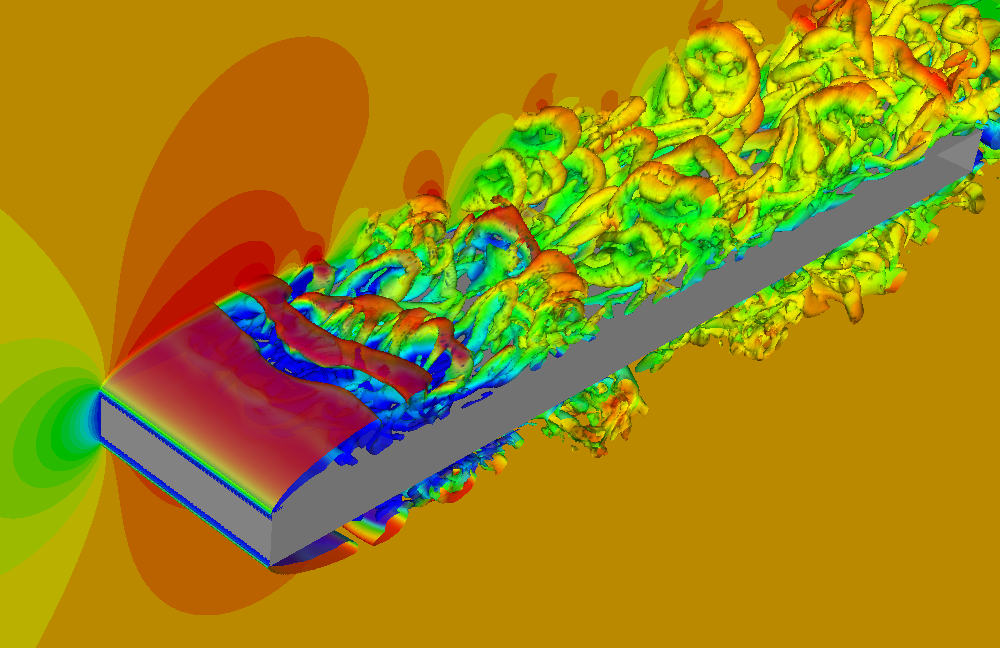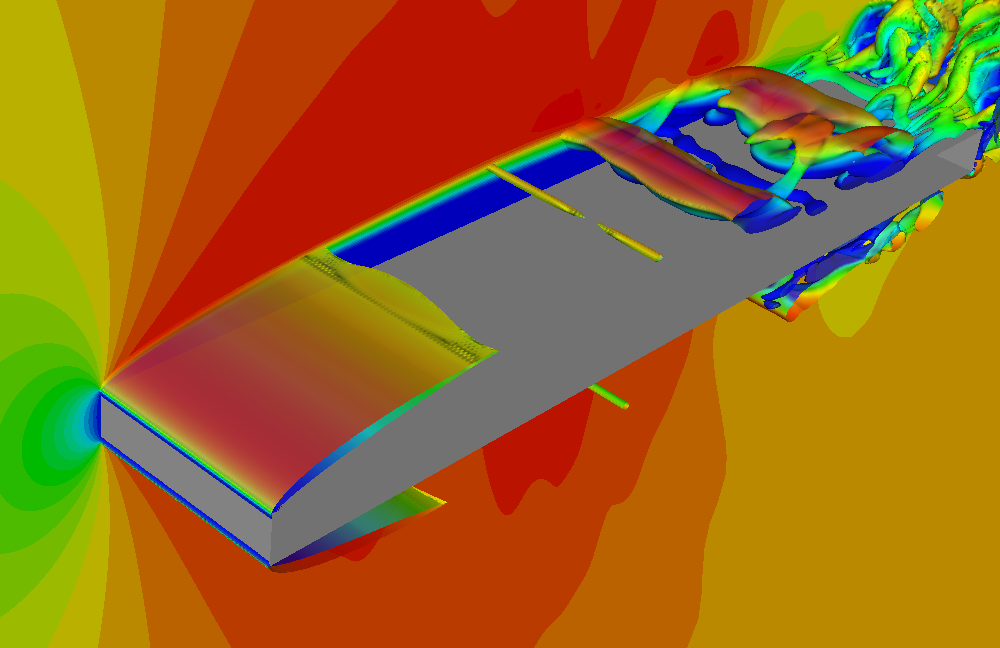Study of compressibility effect on low-Reynolds-number flow over a plate
JAXA Supercomputer System Annual Report February 2021-January 2022
Report Number: R21EACA49
Subject Category: JSS Inter-University Research
- Responsible Representative: Taku Nonomura, Associate Professor, Tohoku University
- Contact Information: Taku Nonomura(nonomura@tohoku.ac.jp)
- Members: Taku Nonomura, Takayuki Nagata
Abstract
Large-eddy simulations (LES) of the compressible flow around the plate with Reynolds numbers of O (10^3) -O (10^4) are performed. The compressibility effects on the laminar separation bubble formed around the leading edge of the flat plate and turbulent transition are investigated. The flat plate is one of the basic shapes the same as a sphere and cylinder. Under the incompressible flow condition, the formation of laminar flow separation bubbles and the turbulent transition occurs in the Reynolds number region investigated in this study. These are important phenomena for the understanding of the low Reynolds number flows. In this study, we will investigate the effect of compressibility on them in detail.
Reference URL
N/A
Reasons and benefits of using JAXA Supercomputer System
In this study, unsteady simulations of turbulence using a high-order scheme are carried out. Hence, large-scale parallel computation is required.
Achievements of the Year
This year, we calculated the flow at the Mach numbers 0.2, 0.5, 0.8, 0.95 with Reynolds number of 20000. Figures 1 and 2 are visualization images at Mach numbers 0.2 and 0.8, respectively. The isosurface is the second invariant of the velocity gradient tensor, and the isosurface and contour are colored by the streamwise velocity normalized by the freestream velocity. For these figures, when the Mach number is 0.8, the laminar separation bubble formed at the leading edge is longer, the two-dimensionality of the flow field is maintained, and the turbulent transition is significantly delayed.

Fig.1: The vortex structure and streamwise velocity distribution at the Reynolds number of 20000 (M = 0.2).

Fig.2: The vortex structure and streamwise velocity distribution at the Reynolds number of 20000 (M = 0.8).
Publications
N/A
Usage of JSS
Computational Information
- Process Parallelization Methods: MPI
- Thread Parallelization Methods: OpenMP
- Number of Processes: 60
- Elapsed Time per Case: 130 Hour(s)
JSS3 Resources Used
Fraction of Usage in Total Resources*1(%): 0.29
Details
Please refer to System Configuration of JSS3 for the system configuration and major specifications of JSS3.
| System Name | CPU Resources Used(Core x Hours) | Fraction of Usage*2(%) |
|---|---|---|
| TOKI-SORA | 6794326.94 | 0.33 |
| TOKI-ST | 0.02 | 0.00 |
| TOKI-GP | 0.00 | 0.00 |
| TOKI-XM | 0.00 | 0.00 |
| TOKI-LM | 0.00 | 0.00 |
| TOKI-TST | 0.00 | 0.00 |
| TOKI-TGP | 0.00 | 0.00 |
| TOKI-TLM | 0.00 | 0.00 |
| File System Name | Storage Assigned(GiB) | Fraction of Usage*2(%) |
|---|---|---|
| /home | 52.50 | 0.05 |
| /data and /data2 | 113152.00 | 1.21 |
| /ssd | 35.00 | 0.01 |
| Archiver Name | Storage Used(TiB) | Fraction of Usage*2(%) |
|---|---|---|
| J-SPACE | 22.95 | 0.16 |
*1: Fraction of Usage in Total Resources: Weighted average of three resource types (Computing, File System, and Archiver).
*2: Fraction of Usage:Percentage of usage relative to each resource used in one year.
ISV Software Licenses Used
| ISV Software Licenses Used(Hours) | Fraction of Usage*2(%) | |
|---|---|---|
| ISV Software Licenses(Total) | 0.00 | 0.00 |
*2: Fraction of Usage:Percentage of usage relative to each resource used in one year.
JAXA Supercomputer System Annual Report February 2021-January 2022


